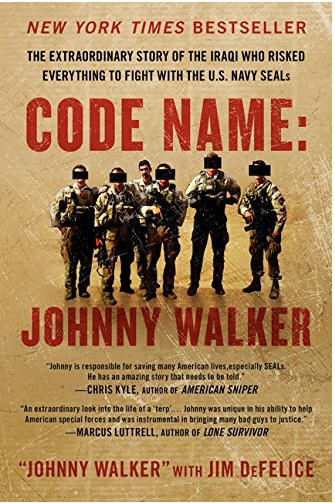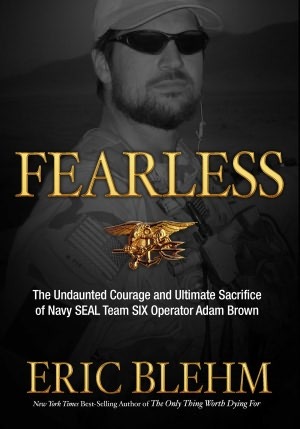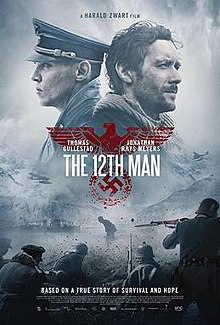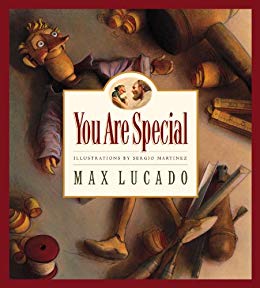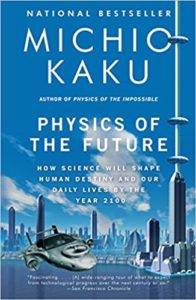
Last week, I was booted out of Codex Writers, a private, online writer’s group that I’d been a member of for somewhere around fifteen years. I’m not broken up about it, but the reason for said booting is interesting, unexpected, and worth a post.
Over the years, writers moved in and out of the group, but there were usually somewhere around fifty to a hundred members active on the boards. We discussed the writing craft and business. We held writing contests. We provided critiques. People shared interesting things about their lives.
The group has moderators. And the moderators got together last week and decided John Brown had to go.
Why?
What, of all the sins one may commit online, triggered this?
Was it refusing to stop posting pictures of cats?
Using too many emoticons?
Infecting everyone’s pages with Russian spam bots?
Nope. Nope. Nope.
I know what you’re thinking. Surely, John, you must have been posting in a belligerent, arrogant, and strident way. You must have been a jerk.
That’s what you’d think.
I assumed that’s what the problem was too. I invited those who were angry and hurt to come to my personal thread and explain what it was that was making them so hurt and angry. A number took me up on the offer. And, to my great surprise, one of their criticisms was that I was too polite.
One person posted that my politeness made her think I was sealioning (a new term to me). Other’s agreed.
Another person said that my polite manner surely indicated I wasn’t sincere. Other’s agreed.
In fact, one of the moderators stated that being polite was part of the insidious problem that was John Brown. She said that my politeness had suckered folks in to letting my awful behavior go on too long.
I was offensive, and I was too dang polite about it.
So what was I doing?
Well, I was asking for evidence.
Don’t ask for evidence
My sin was suggesting that some claims being made about a certain topic seemed to be premature. My sin was in looking at the evidence being offered to support some of these claims and firmly stating that I couldn’t see how it supported the conclusions.
On every topic on the forum, we could question claims and discuss evidence in an effort to figure things out. But there was one topic, as I learned, for which a number of the active members and the moderators decided that was forbidden.
The topic was systemic or “institutionalized” discrimination. On the forum, most of the discussion was how it related to publishing.
They explained to me that it was offensive for me to want to see if the evidence actually supported the claims. It was offensive to post when I couldn’t see that it did.
You might wonder how in the world can that be offensive. After all, evidence is one of the first things we ask for when people make claims.
If Billy Joe comes up to you and says, “Son, aliens done landed in my yard last night. I swear it on a stack of Bibles.” Most of us would want some additional evidence.
We’d want to see the video he took and look at the burn mark in his lawn and the broken branches he said were made when their ship landed. And we’d want to see the report showing that the residue collected off the swing set was a substance unknown to mankind.
But it isn’t just claims about aliens that we do this with.
Historians do it about history.
Scientists do it about science.
Courts require it for reaching verdicts.
Heck, we even do it when we look at movie reviews—we use those reviews as evidence that the movie is going to probably be good or bad.
Evidence.
We’re always looking for evidence to see if our guesses are right. But on this topic, wanting evidence was offensive. I was told it was “hurtful” and “damaging.”
The logic of micro-aggressionism
How could folks get to the point where wanting and challenging evidence for claims was a bad thing?
Well, quite easily. And they aren’t the first to do it.
And lest you think this unfortunate logic is found only in obscure writers groups, you need to know it has spread to many American university campuses. That means it’s eventually coming to an organization near you. And that means chances are good that you or someone close to you will have to face, at some time or another, online or elsewhere, an angry mob (or moblet, as the case may be).
So let’s examine the logic so that when you do, you’ll be able to see the response for what it is, name it, and bring its tenets out into the light and show them for what they are.
Here’s their logic.
ONE, each of us has our individual prejudices, biases, and beliefs about the world.
I’m sure you agree with this. It seems pretty obvious. One guy might think soccer is for wimps, and another might think football is for lumbering meatheads. Of course, it’s not just about sports. We also hold views about people from other groups. Depending on your experience, the media you’ve been exposed to, and the statements and behavior of those around you, you might have unconsciously picked up certain beliefs about Asians, Blacks, Hispanics, Germans, Swedes, Whites, engineers, clowns, etc.
TWO, it’s likely there are others out there with the same prejudices and biases. Some of those ideas will be held in common by smaller percentages of the population. Others will be held in common by larger percentages of the populations.
I’m sure you agree with this too. A lot of Americans like football, but some don’t. A lot of Europeans like soccer, but there are some who don’t. We can see this with our beliefs about various groups. For example, ask anyone in the USA what they think about Nazis, hippies, or hockey players, and you’ll find a handful of common responses.
THREE, various prejudices and biases can get perpetuated in the society. This is what the micro-aggressionists call systemic discrimination.
I’m sure you’re nodding along here as well. Americans have loved football for generations. Europeans have loved soccer too. Views are passed on from parents to children. They’re passed on via the media. There’s a systemic introduction to and reinforcement of those likes, dislikes, and beliefs.
I think we’ll all together here.
However, this is the point where the micro-aggressionists diverge.
When those who have bought into the micro-aggressionist views see any disparity between groups they focus on (ethnic minorities, women, and minority genders), they claim, FOUR, that the disparity between the two groups MUST be because of systemic discrimination. Nothing else could be the cause.
I was told it wasn’t up for question. Furthermore, I was told that you can’t prove such things anyway. It’s “like ecology.” And so I shouldn’t ask. I was also told that questioning simply proved that I was lazy and ignorant, because if I’d done any amount of thinking or study, I’d agree with them.
But it didn’t stop there. They claim, FIVE, that if you question their default answer, you’re not only an ignoramus, but you are also hurting others. Literally hurting them.
The very act of asking for evidence, they say, is a micro aggression, a micro threat, a micro attack. It’s a tiny assault. And those tiny assaults perpetuate the discrimination. So if you disagree, you’re bullying and hurting. If you question, challenge, or want evidence, you’re damaging people’s lives.
And this all leads them to their final conclusion—SIX, if you won’t voluntarily stop, you must be made to stop. You must be silenced. And if you can’t be silenced, then you must be banished.
Did you see where they went off the rails?
Multiple factors
The fact is that there are a LOT of factors that could cause differences in the situations between two people. And commonly held prejudices or biases is ONLY ONE of them. And until you’ve really dug into it, there’s no way to tell how large a factor it is, or if it’s a factor at all.
Here are just a few of the factors that have been shown to have significant effects on a person’s success:
- Birth order
- Beliefs about self-efficacy
- Grit
- Work ethic
- Whether you were born and raised in a single-parent family
- How wealthy your family was
- Self-control
- Whether you graduated from high school
- Certain pollutants in the environment
- Where you lived
- Your height
- Your level of attractiveness (and it’s different attributes for men versus women)
- Your age
- Learning disabilities
- Reading ability
- Level of activity in a religion
- General health
Notice that none of them have anything to do with ethnicity, skin color, or gender. To ignore these as contributing factors in any given situation is not only simplistic and wrong-headed, it can be harmful.
For example, why do Blacks have such high murder rates in some of our biggest cities?
Micro-aggressionism would ignore all the many factors above and assume that it must be some form of systemic racism. It would demand you accept that explanation. And tell you you’re ultimately contributing to a perpetuation of high murder rates if you question it.
Luckily, there are others who are looking into that issue. One strong correlation is with high out-of-wedlock birthrates. Another, with the spike in the late ’70s, is with unleaded gasoline. Or was it simply the boom in males aged 15-24? Or is it possible that murder rates are caused by different mixtures of factors at different times? Look at the graphs here.
What if a major factor is out-of-wedlock births? That has nothing to do with discrimination. It has everything to do with a life choice. And if that is indeed one of the main causes, then we can help save thousands of lives by figuring out a way to help the kids in those cities make better life choices and avoid getting pregnant outside of marriage. What if a pollutant is a compounding factor? Working on fuzzy claims of racism isn’t going to take lead out of the air.
But those under the sway of micro-aggressionism gloss over all of that. They are like doctors who diagnose every symptom as a sign of a broken leg.
Your chest hurts?
It must be a broken leg.
You’re bleeding from the head?
It must be a broken leg.
Your belly is distended?
Dang, another broken leg.
Criminalizing disagreement
The second error the micro-aggressionist philosophy makes is in thinking disagreement is bad.
Yes, it can be uncomfortable when people disagree with you.
Yes, disagreement, even when polite, can stress you, raise your anxiety level, or make you lose sleep.
But if you forbid disagreement, then you lose all of the good things disagreement and the challenging of ideas brings.
Things like science and the search for truth.
Things like votes for women.
Things like civil rights.
The progress of our society has only been possible because we’ve been able to disagree. When we begin to think disagreement is bad, we start down a road that ultimately leads to a tragic end. One we’ve seen over and over.
It’s the road of the Taliban and ISIS. The road of the Inquisition. The road of the KKK. It’s one of the main roads that leads to oppression.
In the last century, Joseph Stalin, the champion of socialism, the champion of the common man, the one who wanted to wipe out inequity, killed an estimated 9-20 million non-combatants. Compare that to the estimated 11-12 million Hitler and his Nazi regime killed. What was Stalin’s view on disagreement? “Ideas are far more powerful than guns,” he said. “We don’t let our people have guns. Why should we let them have ideas?”
Indeed.
To Stalin, disagreement with his socialist ideas was hurtful. It was damaging. It perpetuated inequality. Those that expressed even a whiff of it were either shot or shipped off to the Gulag, the wonderful forced-labor prison camps where people died in droves.
Mao, Pol Pot, and others all felt the same way about their programs.
But the micro-aggressionist philosophy blindly ignores that. It ignores they all started with the righteous cause of equality.
Sure, in the beginning, it might feel like the yellow brick road, but that path doesn’t lead to Oz. It doesn’t even lead to the witch’s place. That road leads to Mordor.
If you go there and raise that regime, you’d better hope two little fellows show up who have the courage to disagree.
The truth is that disagreement is like the tension and stress you feel when you workout and build muscles. It leads to a healthy, vibrant, and strong society.
Banning disagreement is like banning exercise. The result is a dramatic loss of health. A society of couch potato, Ding Dong hunchbacks.
What now
The writer’s group I got kicked out of is filled with good and interesting people. I wish them no ill will. And, again, I’m not broken up about being thrown out. Oh sure, there were good conversations and helpful insights. But, ultimately, it means one less distraction. And that’s good for me getting books out the door.
However, the ideology that some there hold is simplistic, unhelpful, and wrong. It’s not going to take them where they want to go. We know because we’ve seen how that movie ends.
And it appears it hasn’t run its course yet in our society. Which means at some point in the future, you’re probably going to meet folks who have, out of the goodness of their hearts, fallen for this logical trap.
I hope you find opportunity to speak up.
When you do, I hope you treat them politely and with good humor.
And I hope you clearly and unfailingly disagree.
Extras
If you want to know more, here are some great reads and interviews to get you started.
How we pick up unconscious biases
“The Hidden Brain”. This is a Radio West interview of Shankar Vedantam. Nobody conducts interviews better than Doug Fabrizio. In this one Vedantam shares fascinating insights about how we pick up our unconscious biases.
Thinking, Fast and Slow by Daniel Khaneman. A good-humored and groundbreaking tour of the two systems in the mind that drive the way we think and the resulting cognitive biases.
The Righteous Mind: Why Good People are Divided by Politics and Religion by Jonathan Haidt. How those two systems Khaneman talks about manifest themselves in politics and religion and how we can have better civic dialogue.
Free speech and micro-aggressionism
“Hate speech is protected free speech, even on college campuses” by Erwin Chemerinsky. An article in Vox, a liberal-leaning publication, by a Harvard Law professor who has taught about free speech for decades.
“What exactly is a microaggression?” By Jenee Desmond-Harris. Another article from Vox that explains what microaggressions are from the point of view of someone who agrees with that philosophy.
The First Amendment by the Cornell Law School. An overview of what speech is currently protected and what isn’t.
An example of civic dialogue between a classical liberal and someone who disagrees.





